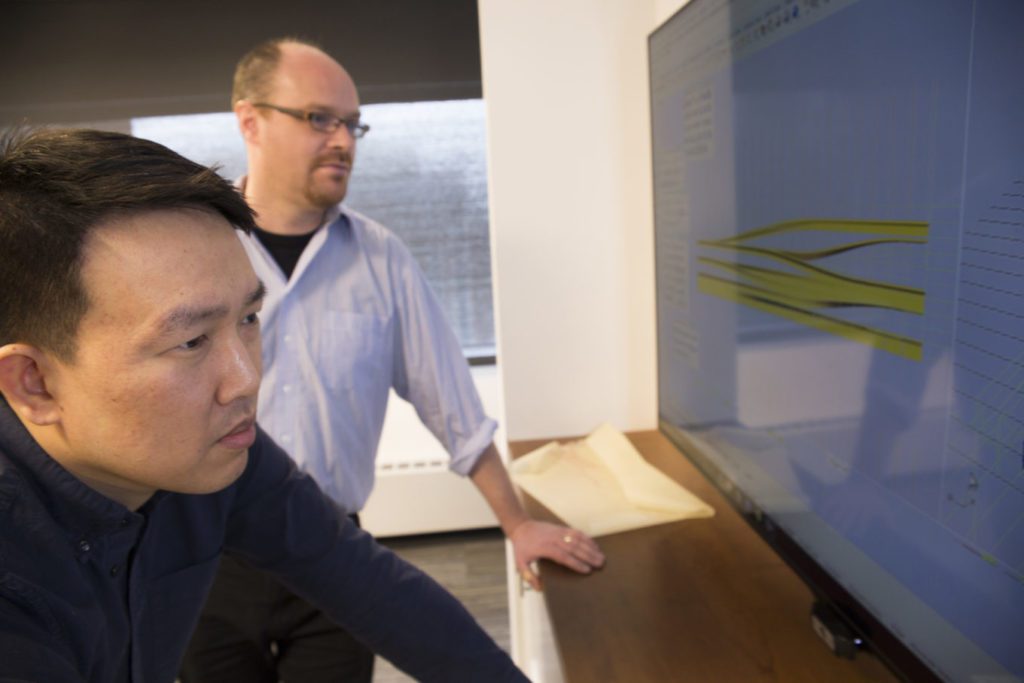Advancements in Technology for the Design and Construction Industry
Banker & Tradesman - February 22, 2021

In recent years, advancements in technology have become increasingly available and popular in the design and construction industry. The latest digital platforms can now augment everything from design presentations, marketing applications, complex 3D modeling, to robust, in-field trade coordination tools that are providing architects, clients and contractors with greater capacity and efficiency to get the job done. Now, more than ever, it is imperative that all facets of the industry stay current on the latest trends in technology and embrace their benefits. Over the past few years, CambridgeSeven has explored and expanded its use of digital tools, developing insights worth sharing.
One of the most fascinating developments we see impacting our practice is Artificial Intelligence or AI. There are several software programs now available using cloud-based AI and generative design to allow architects, urban designers, and real estate developers to make more informed, early-stage design decisions. With AI programs such as those developed by Spacemaker and Hypar, design professionals can rapidly create and evaluate options for a building or urban development. With AI as a tool for the industry, the platform enables users to generate, optimize, and iterate on design alternatives, all while considering design criteria and data like terrain, maps, wind, lighting, traffic, zoning, etc. AI programs can quickly return design alternatives optimized for the full potential of the site.
Another key development, though the technology has been around for some time, has been the continued refinement of Parametric Design. Programs like Grasshopper and Dynamo now give designers easy access to a remarkable number of computational tools that enable the expression of parameters and rules that, together, define, encode, and clarify the relationship between design intent and design response. The result can be architectural wizardry that until now, has been almost impossible to document, let alone construct. Just recently, while participating in a competition for a mega project in Saudi Arabia, CambridgeSeven relied heavily on parametric design to generate a powerful design response to a highly complex architectural language. With significant schedule pressure, we were able create an entirely unique, yet plausible, design for a 400m high skyscraper in just 24 hours. While relatively commonplace now, this effort would be wholly improbable just a few years ago.
Lastly, we are seeing a significant development with large-scale Robotic Fabrication. As early adopters of in-house 3D printing, CambridgeSeven now operates a fourth-generation model that has a much larger printing bed. However, where real advancement is happening is in the field with full-scale robotic building component fabrication. Companies like Odico and Iconbuild are utilizing large scale robots and robotic gantries to fabricate a variety of building components from façade panels to cast structural members. One example of an application is the use of Expanded Polystyrene (EPS) forms that can be hot-wire cut into a shaping mold that is then used for casting concrete. The resultant custom concrete panel can be replicated easily or combined with other shapes and geometries to create unique façades or structural elements. The flexibility of form and shape is infinite, and the fabrication process is significantly streamlined.
As with any technology, a key factor of success is how we use it. Certainly, AI, Parametric Design and Robotic Fabrication have proven their effectiveness and have established a foothold on our industry, one that we really cannot ignore. They take mundane tasks and execute them with efficiency and remarkable precision. In the end, however, it is equally important to recognize their limitations. Ultimately these technologies cannot yet replicate true human synthetic intelligence, where the power of design is an idea–an inspiration that is subjective and influenced by the spark of creative spirit. Together though, technology and design inspiration have a remarkable potential for the future of our built environment.